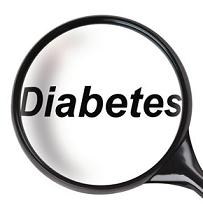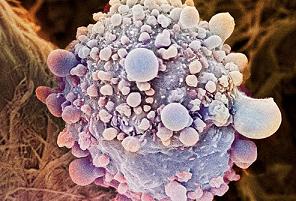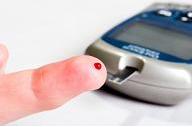Diabetes : How Do People Develop, What Are the Types, & How to Diagnose
posted by: Gretchen

One of the serious health problems that people face today is diabetes. People who suffer from diabetes experience problems converting food to energy. Normally, after a meal, the body breaks down food into glucose. The blood carries glucose to cells throughout the body. Cells need insulin which is a hormone made in the pancreas to help them convert blood glucose into energy.
How do people develop diabetes? It is developed because the pancreas does not make enough insulin or because the cells in the muscles, liver, and fat do not use insulin properly, or both. This results to an increased blood glucose levels while the cells are starved of energy. High blood glucose (hyperglycemia) damages nerves and blood vessels which can lead to complications such as heart disease, stroke, nerve problems, kidney troubles, amputation, and gum infections. Many women who have polycystic ovary syndrome will have diabetes.
How would one know that diabetes is developed? The symptoms of diabetes vary from type to type but are similar in others. There is a lot of information about this disease and these are very informative. You have to be familiar with the types of diabetes, too. This way you know how to diagnose diabetes and when to see your doctor.
Main Types
- Type 1 diabetes: This is formerly called juvenile diabetes or insulin dependent mellitus (IDDM). It is usually first diagnosed in children, teenagers, and young adults. In this type, the pancreas no longer makes insulin because the pancreatic cells are destroyed. These insulin-producing cells are called beta cells.
- Type 2 diabetes: This type is formerly called adult-onset diabetes or non-insulin dependent mellitus (NIDDM) and it’s the most common form. This type of diabetes usually begins with insulin resistance, a condition in which muscle, liver, and fat cells do not use insulin properly as mentioned above. This results to the need for more insulin to help glucose enter cells to be used for energy.
- Gestational diabetes: first occurs during pregnancy. When women are pregnant, many can develop gestational diabetes during the late stages of pregnancy due to the increased need for insulin. This type of diabetes usually goes away after the baby is born.
Symptoms of IDDM
- frequent urination
- tiredness
- excessive thirst and hunger
- weight loss
- blurred vision
- slow-healing sores or cuts
- frequent yeast infections
- itching of the skin (usually around the vaginal or groin area)
How to diagnose diabetes?
Type 1 Diabetes (IDDM)
To diagnose IDDM, a doctor will take urine and blood tests. Diagnosis will be confirmed by glucose levels in the blood and urine, along with ketones and protein in the urine. Blood is drawn from a vein in the patient’s arm after a period at least eight hours when the patient has not eaten. The red blood cells are separated from the sample and the amount of glucose is measured in the remaining plasma. Patients can monitor their own levels with the help of home blood glucose monitoring kits. The test can be utilized to prevent hypoglycemia, or low blood sugar.
Type 2 Diabetes (NIDDM)
It can be diagnosed with the following blood tests:
- Fasting glucose levels – it is diagnosed if higher than 126 mg/dl on two occasions
- Oral glucose tolerance test – it is diagnosed if glucose level is higher than 200 mg/dl after 2 hours.
- Random (non-fasting) blood glucose level – it is suspected if higher than 200 mg/dl and accompanied by the symptoms.
Gestational Diabetes
- Fasting blood glucose or random blood glucose. Before this the doctor will ask you to fast for at least 8 hours. Your doctor may check your blood glucose at any time during the day that’s why it’s called random blood glucose.
- Screening glucose challenge test. You will drink a sugary beverage and have your blood glucose level checked an hour later.
- Oral glucose tolerance test. Three days before the test you should eat normally. Then you will fast 8 hours before the test.
An ounce of prevention is better than a pound of cure. Before diabetes develops, you should prevent it from observing proper diet.
You might also like
|
|
|
|
|
One Response
diabetes is a serious disease but it can be avoided by having an physically active lifestyle*”,




